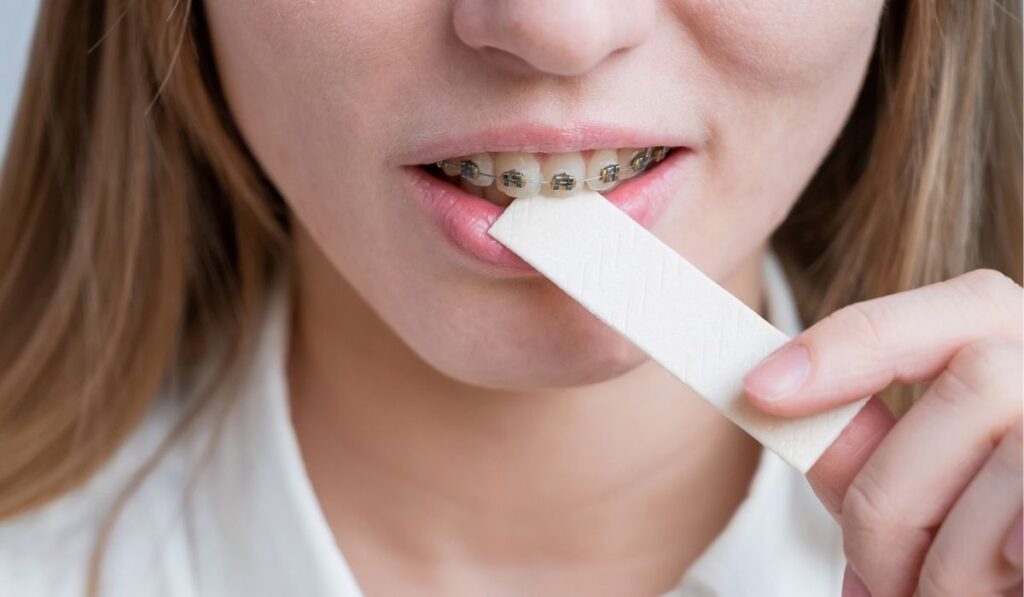The state of your teeth can significantly influence your overall well-being, and a proper bite is a key part of oral health. An underbite is a common misalignment where the lower teeth protrude past the upper teeth. Although this is usually not a serious condition, an underbite can cause excessive wear of the teeth, jaw pain, and other unpleasant side effects. So, what can you do to fix an underbite?
Braces are an effective treatment for an underbite, especially if the condition is mild or moderate. Treatment with clear, metal, or lingual braces usually takes between 18 and 30 months, and it can cost several thousand dollars. A severe underbite may require jaw surgery along with braces.
As you’re considering whether to get braces for your underbite, always consult with a dentist about your specific situation and possible treatment options. But in the meantime, let’s take a look at what exactly an underbite is and how braces can help fix it.
What Is an Underbite?

An underbite is a malocclusion caused by your lower teeth overlapping the upper teeth. A mild underbite occurs when the two rows of teeth nearly meet, while a severe underbite occurs when the teeth do not meet at all.
This condition can be severe in some cases, causing the lower teeth to protrude very far forward. An underbite is not just a cosmetic problem. While some people can live with mild cases, severe cases can cause oral health issues such as:
- Difficulties speaking
- Difficulty chewing and biting food
- Mouth pain
Underbite Causes
Several factors can influence how your teeth align. Teeth normally grow with the upper teeth slightly over the lower teeth. Proper tooth alignment prevents you from biting your lips, cheeks, or tongue when you eat.
Below, we list a few factors that can cause someone to develop an underbite.
1. Genetics
An underbite is usually inherited. If another person in your family has an underbite, you are more prone to develop one as well. Genetics also plays a role in the shape and size of a person’s tooth and jaw.
Certain birth defects, including a cleft lip or palate, may also manifest. All of these conditions can lead to malocclusion.
2. Childhood Habits
Certain childhood habits can increase the likelihood of developing an underbite. An underbite can be caused by a variety of childhood habits, including:
- Thumb sucking
- Using the tongue to press against teeth
- Use of pacifiers in children over the age of three
- Long-term bottle-feeding past infancy
3. Tumors
Tumors in the mouth or jawbones can cause the jaw to protrude, resulting in an underbite.
4. Injury
Severe facial injuries can permanently damage the jawbones and result in an underbite. Surgery can help repair broken jawbones. However, surgical realignment doesn’t always guarantee the jaws will properly fit together.
Can Braces Fix an Underbite?
Braces can help realign the jaw or straighten the teeth in mild cases of an underbite. In severe cases of underbite, jaw reduction surgery before braces may be required to correct the bite if the bottom arch is too far out of reach from the upper arch.
An orthodontist will need to evaluate the situation and recommend braces if necessary. After braces, the patient may also need to wear a retainer to help maintain the corrected shape.
What Type of Braces Do You Need for an Underbite?

Below we’ll discuss three types of braces that can help treat an underbite.
1. Metal Braces
Even though many adults nowadays prefer more discrete teeth straightening devices, metal braces can still serve as an effective way to treat this condition. Metal braces are highly adaptable and can treat an underbite better than some other, newer dental devices.
The cost of this treatment ranges between $4,000 and $7,000, with a treatment time of 18 to 30 months.
2. Clear Braces
Clear braces function similarly to metal braces but have a sleeker appearance that many adults prefer. These braces have translucent ceramic brackets that blend in with the teeth, making them less conspicuous than metal braces.
Ceramic brackets are also more convenient to wear because they aren’t as sharp as metal brackets. Clear braces roughly take the same treatment duration as metal braces and are also effective for repairing mild to moderate underbite cases, provided a qualified orthodontist installs them.
3. Lingual Braces
Unlike clear braces, lingual braces are completely hidden. These braces are fixed at the back of the teeth rather than the front. These braces are also more difficult to install and adjust.
It is important to note that lingual braces can put inconvenient pressure on the tongue, resulting in a minor lisp. Maintaining proper oral hygiene also requires more effort because brushing and flossing around the inward-facing brackets can be challenging.
This treatment is typically quite expensive due to the additional work involved and costs between $7,000 and $10,000. Lingual braces are the best bet if keeping your treatment completely undetectable is your top priority — and if you can afford it.
Other Treatment Methods
Braces are not the only treatment option for those with an underbite. Here are a few other treatments that your dentist might recommend:
1. Upper Jaw Expander
A palatal expander is mounted on the roof of the mouth and gets expanded a small amount every night. This device gradually expands the dental arch and aligns the upper and lower jaws.
2. Reverse Pull Face Mask
This device wraps around the head and connects to metal bands at the back of the upper teeth, pulling the upper jaw forward and aligning it with the lower jaw.
3. Chin Cap
A chin cap wraps around the lower jaw and chin, preventing further protruding. This treatment is a great choice for kids and teenagers whose jaws are still developing.
How Long Does It Take to Fix an Underbite With Braces?
The average length of treatment for an underbite with braces is 18 to 30 months. The duration of this treatment could be shorter or longer depending on the severity of the condition.
What Happens If You Don’t Treat an Underbite?
If you have an underbite, it’s recommend to address the issue as soon as possible. This condition can impact a person’s self-confidence and, more critically, also cause serious dental problems, such as:
1. Poor Oral Hygiene
An underbite makes it difficult to clean the teeth, leading to a bacterial infection in the mouth and bad breath. This condition also makes the teeth decay faster due to deterioration of the enamel on the teeth and poor oral hygiene.
2. Joint Disorders
Underbite can lead to temporomandibular joint problems. This joint is the hinge that connects the skull to the jaw. Patients suffering from this issue may feel that their jaw is stuck in one position and might hear popping sounds once they move the jaw. This condition can be excruciating, so we advise treating the underlying issue.
3. Sleep Apnea
An underbite can also lead to sleep apnea. Sleep apnea is a condition in which a person’s breathing stops at various points during the night. This condition will result in trouble sleeping and cause overall body fatigue.
So, Are Braces the Way to Go?
Braces are capable of producing effective and long-lasting dental transformations. If you’re considering repairing an underbite, find an orthodontist committed to selecting a treatment solution that best suits your needs and budget.
Remember that an underbite is hardly ever a major medical concern, but treating it can significantly improve your confidence, oral health, and overall well-being.


